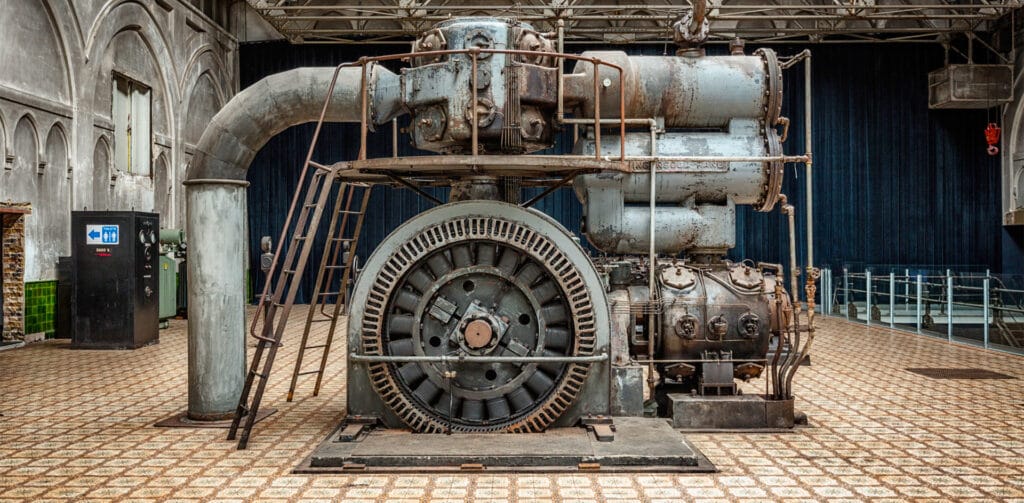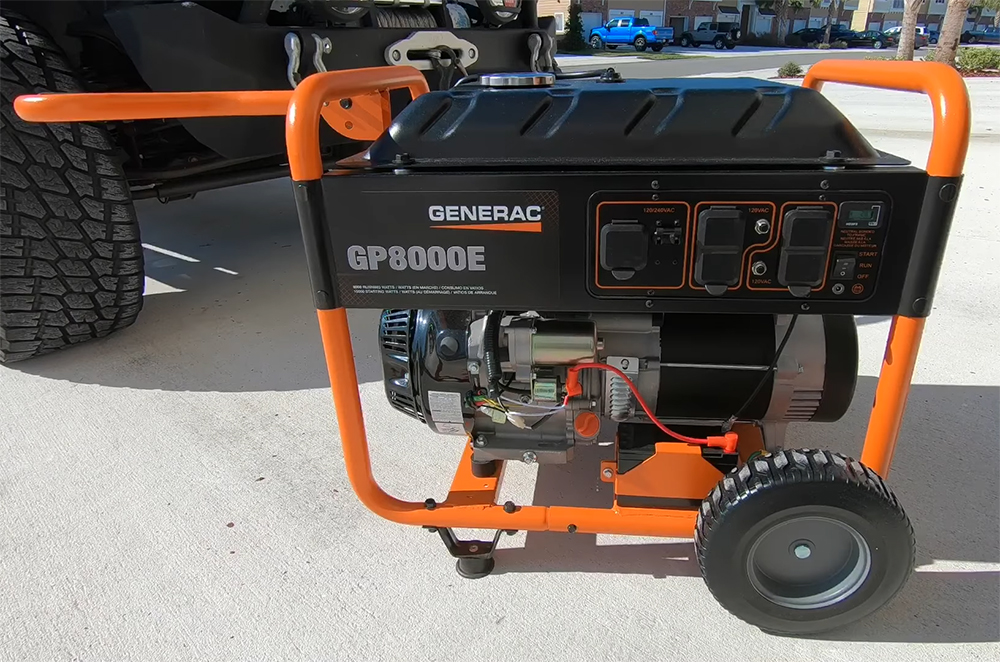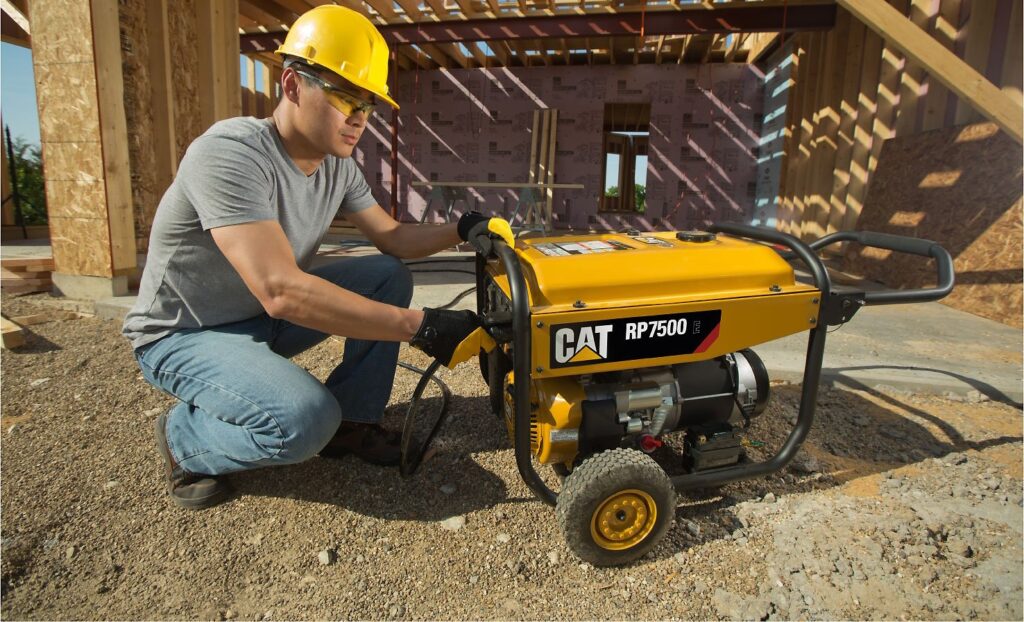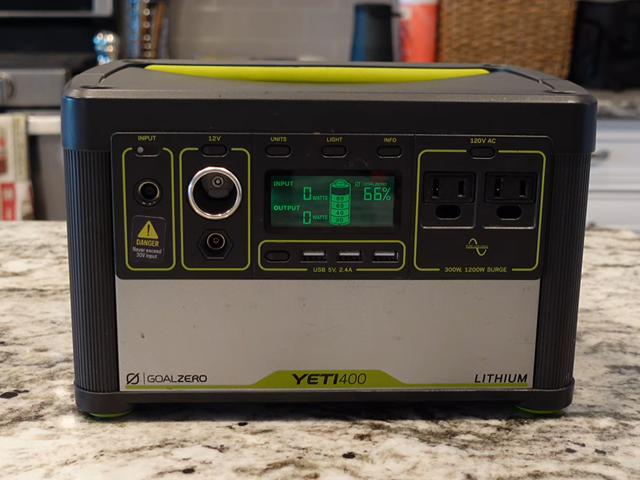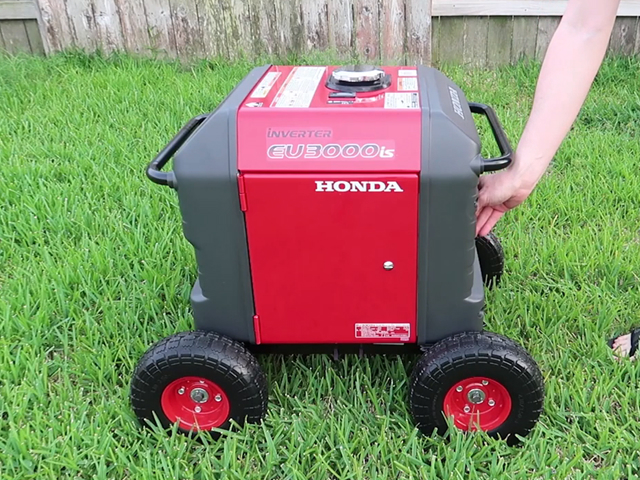
Alternative energy is the way of the future. Not only does it mean less pollution, less waste, more renewable energy, increased innovation, and so much more. Solar panels are one amazing example among wind turbines, geothermal heating, and kinetic energy generators. Many technological advancements can eventually replace nonrenewable resources leading to a clean, innovative, and secure future.
Home and business owners are taking responsibility. Taking their energy into their own hands, they are limiting their carbon footprints and overall costs. There are difficulties and a steep learning curve for any of these projects. However, DIY eco-living shouldn’t be impossible. There are ways to learn and adapt your solar array to suit your needs. Read below to learn more about how to wire solar panels in your home or business.
When it comes to technology, especially electrical, there are a lot of key electrical terms. Start by learning these terms to understand solar panel wiring. Below is a list of electrical terms that you should know. Voltage Trusted Source Solar Energy Glossary, Department of Energy The solar glossary contains definitions for terms related to solar power and technologies like photovoltaics (PV) and concentrating solar power (CSP). www.energy.gov (V) – Measured in volts, this is the difference in electrical charge between two points. This is impacted by many factors, including the amount of sunlight and temperature.
Current (I) – This is the rate at which the charge is flowing through the circuit. Electric current is measured in Amps or amperes. In the case of solar energy, Olle Inganäs Trusted Source Solar energy for electricity and fuels - PMC Solar energy conversion into electricity by photovoltaic modules is now a mature technology. We discuss the need for materials and device developments using conventional silicon and other materials, pointing to the need to use scalable materials and to reduce the energy payback time. Storage of solar energy can be achieved using the energy of light to produce a fuel. We discuss how this can be achieved in a direct process mimicking the photosynthetic processes, using synthetic organic, inorganic, or hybrid materials for light collection and catalysis. We also briefly discuss challenges and needs for large-scale implementation of direct solar fuel technologies. www.ncbi.nlm.nih.gov , and Sundström Villy, two authors from Ambio, explain that the electrical current is generated from absorbing photons from the sunlight and results in charges being generated in semiconductive material.
Power (P) – This is another vital term in electricity. This is equivalent to voltage times current or V*I = P. Trusted Source Solar Energy Glossary, Department of Energy The amount of electromotive force, measured in volts, that exists between two points. www.energy.gov Measured by Watts (W), it’s the rate that energy is transferred. Direct Current (D.C.) – This is a current that only goes in one direction. It’s unidirectional, so the flow is always within the same direction. Alternative Current (A.C.) – An alternating current is a current that goes in any which way. This electric current can reverse directions at regular intervals.
It can be very confusing for those without an electrician background. However, taking the basic knowledge of electrical, you can learn and apply it to your solar panel array. Adding this to a home can not only lower the costs of maintaining a home regardless of the size but also increase the value of the property.
As more and more people are taking advantage of the initiatives in renewable energy and financial assisting legislation, there’s a much larger interest. Ensuring that your building is safe, secure, and sustainable is an amazing feeling. Cost or complication shouldn’t stand in your way. Nate Hausman, the Project Director of Clean Energy States Alliance, regularly releases a guide to assist those that are new to solar energy. Read more Trusted Source Homeowners Guide to Solar Financing If you are thinking about going solar, there is good news: The price of a solar PV system has come down dramatically in recent years, and there are more ways to pay for it. But with so many solar financing options now available, the marketplace for these products has become increasingly complex. It can be hard to choose among the different packages and vendors. The differences between them may not be readily apparent. Some contracts are filled with confusing technical jargon, and key terms can be buried in the fine print of a customer contract. www.cesa.org to discover how to finance your solar array.
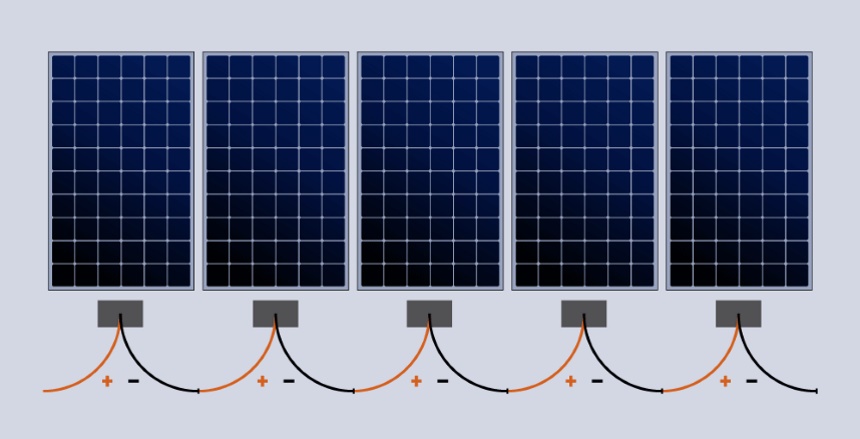
This is one of the main ways that electrical currents connect. Using a series, it’s one panel right after one another in a consecutive line. Wiring your panels using series wiring means that every panel is connecting to the one before and after it. This method increases the voltage of the string, but the current remains the same throughout all the panels. one panel can reduce the entire current for all the panels. The overall current is based on the panel with the lowest amount.
For example, using The Bluetti Sp200 200w Solar Panel Designed For Outdoor Van Camper in a series means that if one of the Bluetti panels were diminished, so would all of them. one of the Bluetti panels could be blocked by a cloud and reduces its current by 10%. Because of that, All of the panels in the series would be reduced to that panel’s current regardless of the sunshine on them.
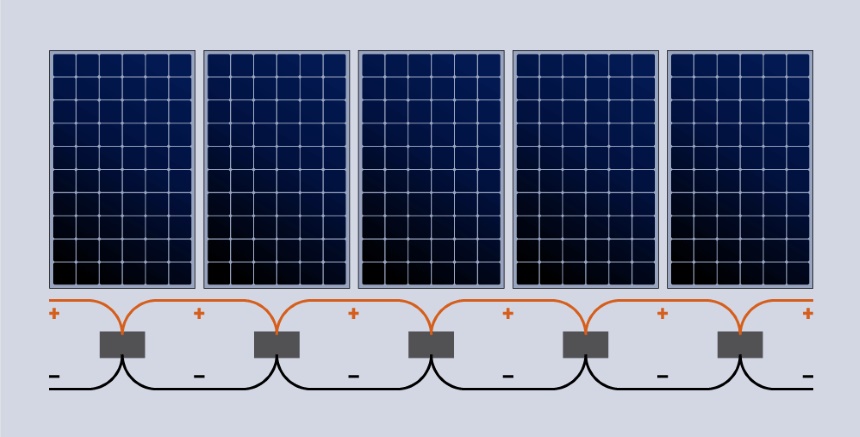
On the other hand, wiring in parallel removes the risk of that happening. Using parallel wiring when wiring solar panels means that they are all interconnected with direct streams of electricity running through different wires. When the panels are all connected in parallel, it means that the amperage or current of the circuit is increased with each additional panel. It can make a difference depending on what you need from your solar array.
There are many different ways to approach electrical wiring. It’s vital to understand the difference between wiring in a series versus parallel stringing. Each method has different effects and impacts on the panel itself and the electrical within. To put it in the simplest terms, it’s a straightforward matter of wiring. A series connection joins photovoltaic cells by connecting positive to negative leads. This increases the voltage but not the current. A parallel connection joins solar cells or photovoltaic modules by connecting the positive leads and the negative leads with one another. This increases the current but not the voltage. Depending on the external factors of the environment around your solar array, there are options to use either series or parallel.
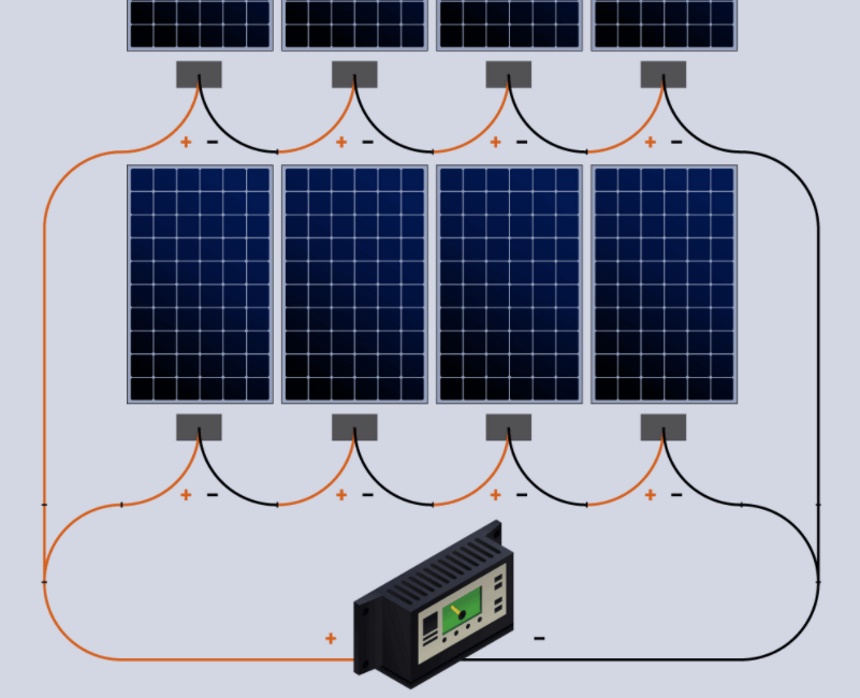
A string inverter is one example. These are devices that convert direct current electricity to an alternating current. This works well for both isolated stand-along systems and to supply power back to the grid. A string inverter contains a rated voltage window and a rated current.
String inverters have maximum power point trackers (MMPT) that can alter both the current and voltage. This allows you to produce the maximum amount of power possible from your solar panels.
Remember that wiring in series will increase your voltage. Wiring in parallel will increase the overall amps. Electricians will argue about this. However, parallel wiring means that there is a continuous operation of the panels, even if there is a problem with one of the panels. One malfunctioning or broken panel won’t stop these panels from taking in power from the sun.
Although parallel seems to be the better choice for getting the most current, it’s not always the best option for your solar panel array. It can be difficult if there is a specific requirement for voltage or current. The best for all options is a combination system. Using a solar installer can help design a solar array to be a hybrid of both types. This is the best of both worlds and provides a greater degree of specification for what you need from the solar array.
Technically you can! Most solar installers will design a system that’s both series and parallel. This allows the solar array to operate with higher amps and volts. Ensure your solar panels and system are working to the best of their ability.
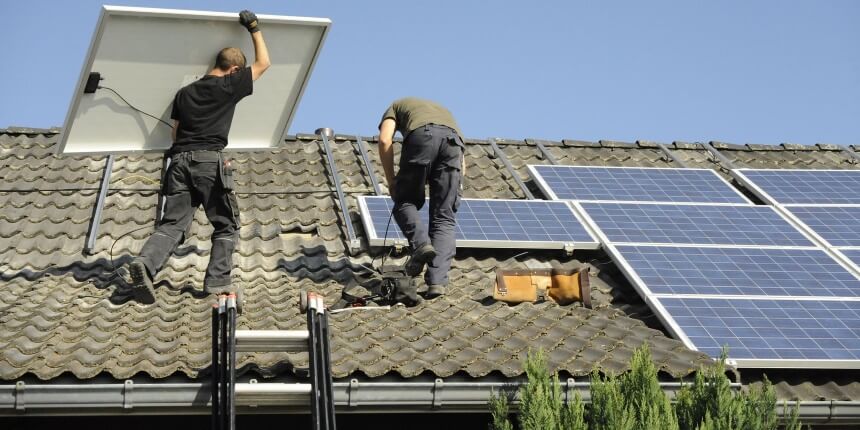
Adding a panel to your system can be complicated. There are three main options; keep your inverter and manually add more panels; replace the inverter with a larger one or additional microinverters; install a new and separate system. Adding more photovoltaic or P.V. panels is par for the course. The more panels you have in your array, space provided, the more solar energy you’ll be able to harness. Let’s take an industry-leading example from Rockpals. Their SP003 100W Foldable Portable Solar Panel Charger is an amazing example of quality craftsmanship and technology that adds to the overall array. Adding more panels depends on the design of the useable space and the solar equipment itself.
Using solar panels with less than preferential weather can make the entire process daunting, especially if you’re using a series type of wiring. Don’t worry, some tips and products help with exactly that. Some of the most well-known brands for the most efficient solar panels for cloudy days include Sunpower, energy, and ecoflow.
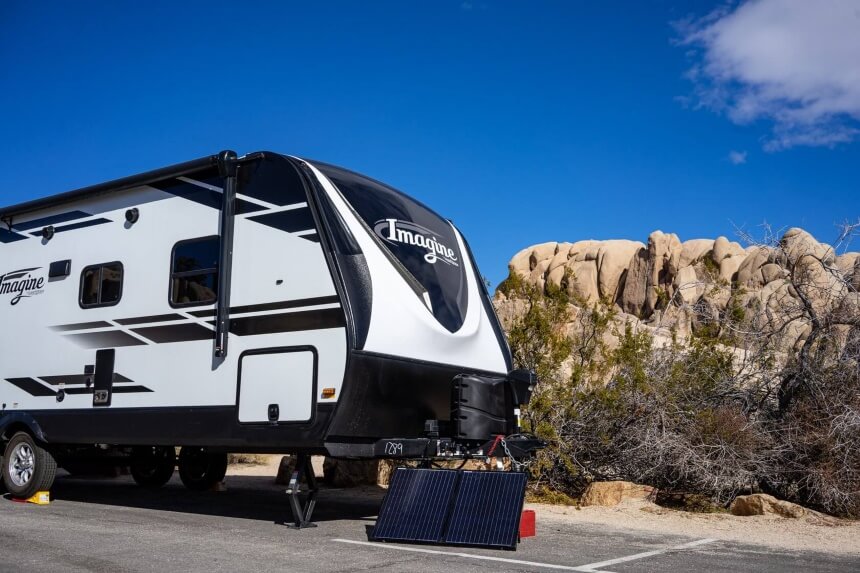
These are also a great way to start for a beginner. Take your renewable energy on the road with portable options for solar arrays. The industries leading Efficient R.V. solar panels ensure traveling doesn’t lose its charge. Renogy 100W 12 Volt Monocrystalline Foldable Solar Panel Suitcase is an amazingly compact design that makes it simple to bring on long trips.
Wind and solar renewable energy technologies have become increasingly cheaper over the past decade. Between 2010 and 2019, the price of solar photovoltaics fell by 82 percent Trusted Source Renewable Power Generation Costs in 2019 Newly installed renewable power capacity increasingly costs less than the cheapest power generation options based on fossil fuels. The cost data presented in this comprehensive study from the International Renewable Energy Agency (IRENA) confirms how decisively the tables have turned. www.irena.org . Combining this low cost with an increasing return makes it impressive and tempting. Using either a microinverter or optimizer can help avoid limitations to string inverters.
Microinverters convert direct current or D.C., which is the energy it collects from the sun, to an alternative current (Ac) that your home can use. with each panel connected to its microinverter, a solar system can be expanded by one single panel each time. This is a helpful idea when string inverters are maxed out. Optimizers ensure that you get the maximum production out of every panel. These are designed to model your model for the most accurate form. It relates to the model’s movement for finding the best source of sunlight. This ensures maximum input for maximum output. Both allow a great deal of flexibility with your solar system array.
Utilizing portable solar panels is an amazing function not only for your home but also for the environment. However, you need to connect them to the power grid. If you’re using a series wiring, there will be one single connection needed to the grid. Using parallel wiring, however, requires multiple wires and thus multiple connectors.
First things first, ‘the grid’ Trusted Source Solar Energy Glossary, Department of Energy An integrated system of electricity distribution, usually covering a large area. www.energy.gov refers to an integrated system of distribution for electricity. Typically, it covers a large area such as a neighborhood or a town. When you connect your solar array to the grid, you’re connecting it to your local utility electrical grid to complement the typical electricity supply from your utility company. In most residential and commercial buildings having a solar panel doesn’t completely replace the physical components of traditional utility companies.
Now that you know how to wire solar panels, the power is in your hands both figuratively and. Sustainable living is a viable and valid way to live. Solar panels are just one example of maintaining an environmentally friendly, sustainable lifestyle. Not only do they lower carbon intake, encourage less waste, are completely renewable, but they’re also a great way to invest in the future of clean energy. Adding a solar array to a building is a great way to add a touch of sunshine. Whether you want to rewire a solar panel array on the side of your small urban business, or you want to add a solar panel array in the back yard of your family home, it’s a great way to take control of your future.
